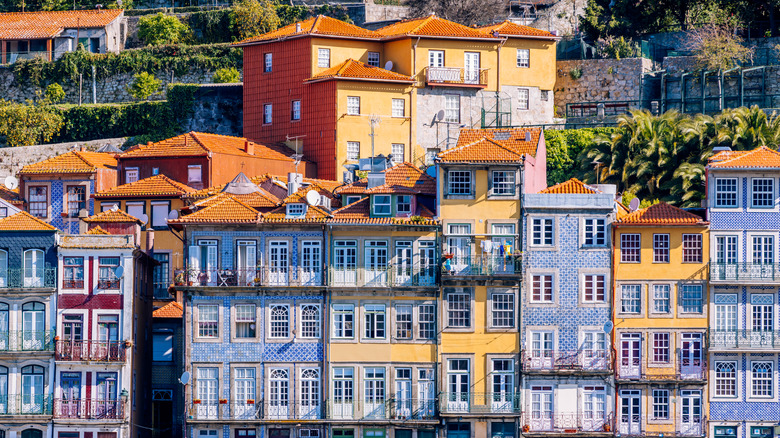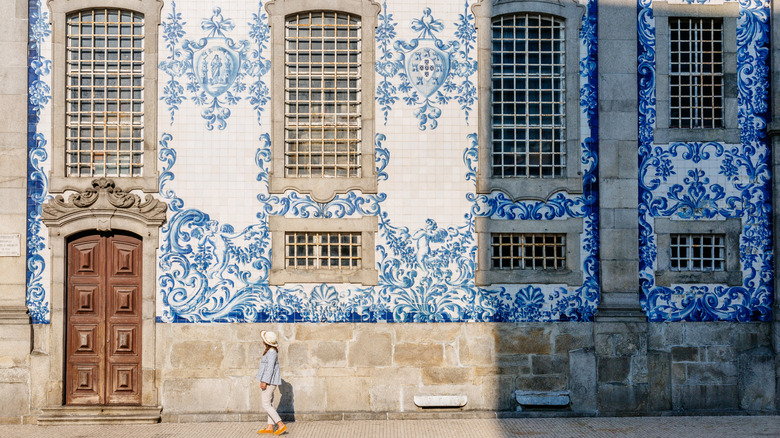Rick Steves Says This Unique Museum In Portugal Is A Charming Spot To Escape The Crowds
Around 200 miles north of Lisbon is Porto, Portugal, a coastal city with a rich European heritage. Nowhere is this heritage more evident than in the Porto's historic center. Here, storybook buildings line the hillsides, their ornately-tiled facades forming a colorful mosaic above the Douro River. Walking the old streets, it's as if time has stood still for hundreds of years. In some ways, it has, because the Portuguese go to great lengths to protect the architectural authenticity of their cities. "In Portugal, they respect their heritage. And I think the United States can be inspired by that," says travel expert Rick Steves in his Facebook video entitled "Porto's Bank of Materials."
Steves explains in the video that one way Porto residents preserve their architectural legacy is through a public works project known as the "Banco de Materiais," or Bank of Materials. This is a large storage facility for restoration supplies, including stuccos and tiles with traditional "azulejo" designs, which adorn the exteriors of houses, churches, and other buildings throughout the historic city. The video shows Steves and his Portuguese tour guide, Ricardo, wandering through the "bank," admiring intricately textured stuccos and rows of striking tiles, whose swirly, deep blue designs scream Portugal. This fascinating place is less of a museum and more like an archive or storeroom, but it allows visitors to learn more about life in Porto. It's also supremely underrated — so you're less likely to have to fight off crowds like you would at other attractions.
How Porto's Bank of Materials functions
When owners of historic homes in Porto need to update the exteriors of their homes, they can search the bank for necessary replacement materials. If they find tiles or stuccos that match their homes' original designs, they can then withdraw whatever they need, free of charge. The only requirement is that they first show proof of ownership for the building in question. In the event they can't find the matching materials they need in the bank, by law they must obtain suitable replicas elsewhere –– rather than introducing new designs that could erode the look and feel of the old city. "The consequence is you have a beautiful city that respects its heritage and at the same time, it's modern," says Steves in the video.
Besides its architectural richness, Porto is also known for its burgeoning food and wine scene. This fact isn't lost on Steves, either. In an article on his blog, he notes that Porto boasts one of the best food halls in Europe along with the world's largest stash of port wine. When touring the port wineries in the nearby Douro Valley (a must when visiting Porto), Steves recommends staying in the underrated quintas (vineyards) rather than hotels for a true taste of rural life in Northern Portugal. This will ensure that a culturally authentic experience beginning on Porto's historic streets extends well into the surrounding countryside.

